Bermuda is not just a beautiful island, but also an enigmatic place where shipwrecks and legends intertwine. The coral reefs off the coast of Bermuda are underwater graveyards holding the stories of more than 300 sunken ships that date back as far as the 1600s. Each sunken vessel holds its own story, waiting to be discovered and unraveled by those brave enough to delve into its depths. So, let’s dive in and discover some of the amazing shipwrecks you can still see in Bermuda!
Why Are There So Many Shipwrecks in Bermuda?
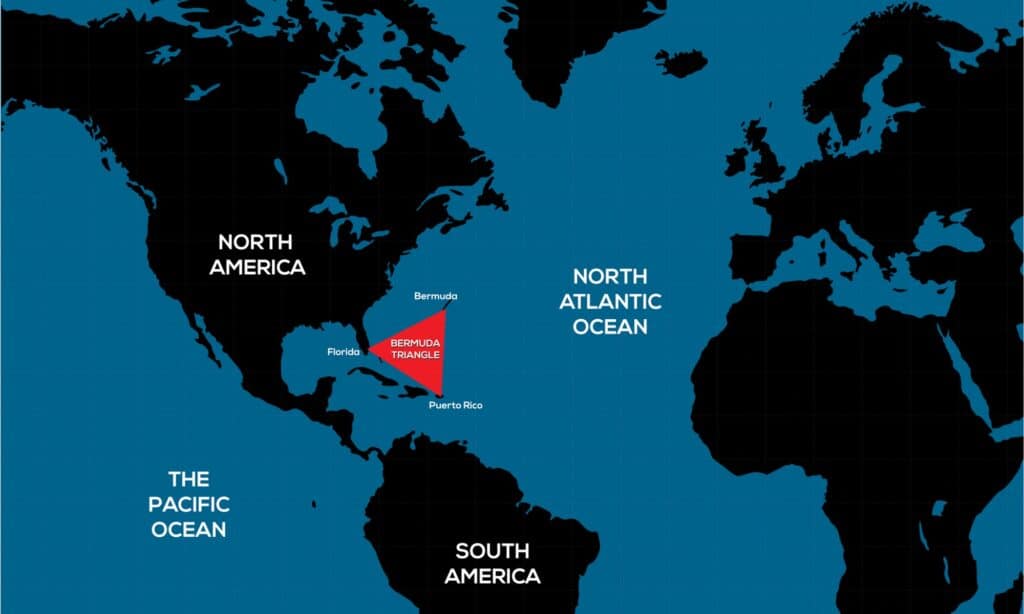
Ominously nicknamed the “Isle of Devils”, Bermuda is the shipwreck capital of the world.
©iStock.com/GEMINI PRO STUDIO
The treacherous reefs that surround this enchanting Island have claimed countless vessels throughout the centuries, leaving behind stories of mystery and intrigue. Nestled within the infamous Bermuda Triangle, this captivating destination is no stranger to different types of bizarre natural phenomena. From extreme weather conditions and unpredictable sea floors to rogue waves and strong electromagnetic poles, Bermuda’s waters hold secrets that continue to baffle even the most seasoned sailors.
In addition, the unusual phenomenon of electric fog, an eerie mist that often shrouds the island in an ethereal cloak, has been said to disrupt navigational systems and leave pilots and sailors disoriented and lost. It’s no wonder that countless airplanes and ships have vanished here without a trace, confounding experts and fueling theories of otherworldly intervention.
Bermuda passed the Historic Wrecks Act of 2001 to protect and maintain its many incredible and historic shipwrecks. Experienced divers can explore ships in deeper waters. Wrecks in shallow waters are visible for snorkelers and glass-bottom boat tours.
1. The Cristóbal Colón (1936)
Just a few miles north of Bermuda lies one of the island’s most remarkable shipwrecks, the Cristóbal Colón. This colossal vessel — the largest of any shipwreck in the area — was a grand luxury cruise liner. It sailed through the seas like a floating palace, weighing over 10,000 tons and stretching nearly 500 feet long. In 1936, however, tragedy struck as the ship crashed into a treacherous coral reef 8 miles north of Bermuda.
Visiting the Cristóbal Colón: Now submerged across about 100,000 square feet, the remains of the Cristóbal Colón sit 15 to 60 feet below the surface. This underwater site has also become a sanctuary for a vibrant array of sea life, such as groupers, soft and hard corals, barracudas, and the occasional sea turtle. The shipwrecked Cristóbal Colón stands out for how remarkably intact many of its parts are, including propellers, engines, steam turbines, and even a bathtub. For those eager to explore the Cristóbal Colón, the ideal time is during the spring and fall months.
2. The Hermes (1984)
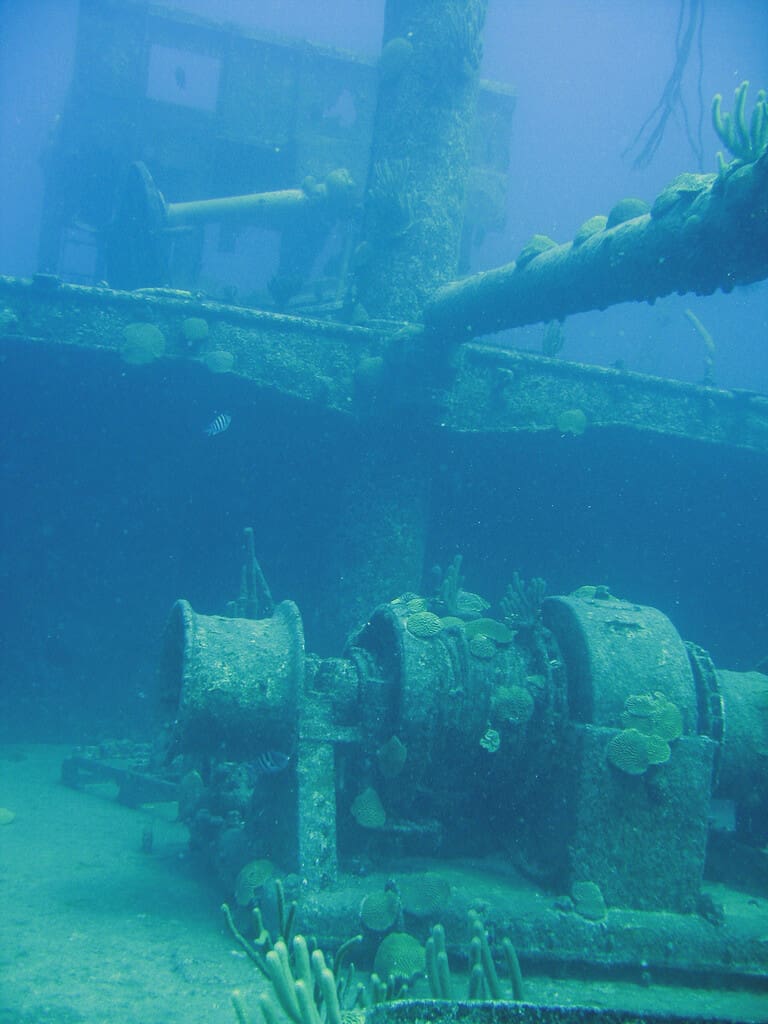
The
Hermeswas 160 feet long.
©Curtis & Renee / Flickr – License
Constructed in 1943, the Hermes encountered unexpected engine trouble near Bermuda on its journey to the Cape Verde Islands in 1983, forcing the crew to abandon their ship. In 1984, the abandoned ship was acquired by the Dive Association for a mere one dollar. It was transformed into a majestic sunken artificial reef. Today, the Hermes sits in Horseshoe Bay, about 1 mile south of Warwick Long Bay Beach.
Visiting the Hermes: The Hermes is one of Bermuda’s best diving sites for many reasons. The ship is almost fully intact and rests upright on a sandy bottom about 75 to 80 feet below the ocean surface. In addition, the underwater visibility at the wreck is astounding, with crystal clear waters at around 100 feet for most of the year. The Hermes is an extremely popular dive site because of its preservation, water visibility, and colorful sea life.
3. The Mary Celestia (1864)
The remarkable Mary Celestia was a 100-foot-long paddlewheel steamer. The vessel served as a blockade runner for the Confederacy during the American Civil War. It demonstrated extraordinary speed as it outmaneuvered Union ships, reaching an impressive 17 knots while transporting guns, ammunition, and other supplies for the war, However, its final voyage in 1864 met a tragic end when the Mary Celestia sank beneath Bermuda’s waters.
Visiting the Mary Celestia: Resting 55 feet below the ocean’s surface, much of the Mary Celestia remains remarkably preserved today, including its iconic paddle wheels (one of which stands up straight like a Ferris wheel), anchor, and boilers. Situated just 600 yards off the south coast, the wreck rests on a flat and sandy seabed 55 feet beneath the ocean’s surface. Over the years, divers have discovered many intriguing objects from the wreckage, including high-grade “smokeless” coal lumps and even an unopened wine bottle from 1853.
4. The North Carolina (1880)
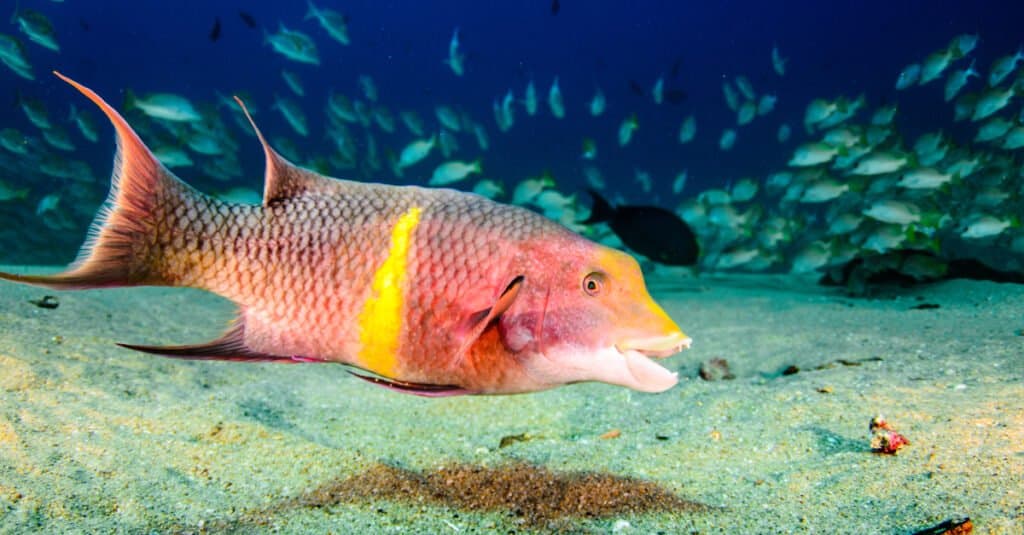
Color-changing hogfish commonly swim around the shipwrecked
North Carolina.©Leonardo Gonzalez/Shutterstock.com
Tragically sinking beneath Bermuda’s waves on New Year’s Day in 1880, the North Carolina was an English iron hull barque that stretched 250 feet in length. Although the middle of the ship has since collapsed, the bow and stern are relatively intact. They sit upright just a few miles to the south of Gibbs Hill Lighthouse under 25 to 45 feet of water.
Visiting the North Carolina: Photographers love the shipwrecked North Carolina. The wreck provides rather excellent backgrounds with its chilling and mysterious atmosphere. In addition, snapper and hogfish often swim around the wreckage site. However, if you wish to visit the North Carolina, you’ll need to be careful and dive only when the water is calm. When the sea is rough, it can kick up dirt and sand on the ocean floor, making it hard to see.
5. The Montana (1863)
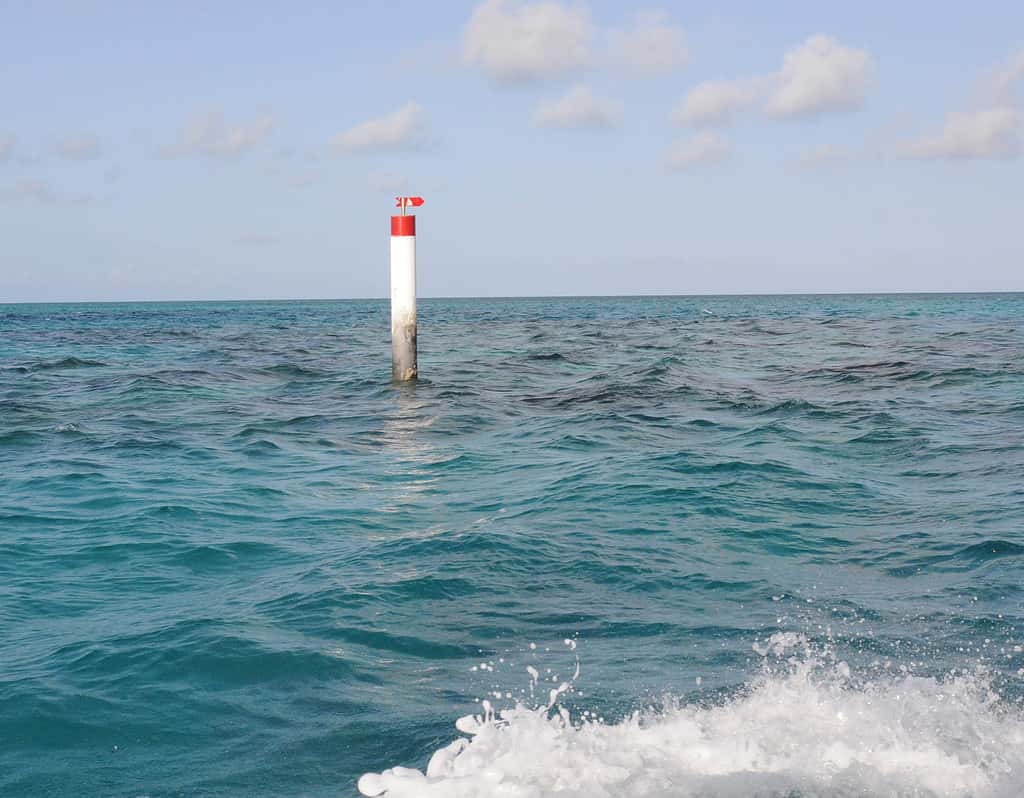
The
Montanaand the
Constellationsank very close to one another, near the same reef marker.
©David Broad / CC BY 3.0 – License
236 feet long and 42 feet wide, the Montana was a side-paddlewheel steamer built in Glasgow, Scotland in 1860. Another blockade runner for the Confederacy during the American Civil War, the Montana was carrying cargo from London on its way to North Carolina when it hit a reef on the north coast of Bermuda and sank beneath the waves.
Visiting the Montana: The wreckage of the Montana holds a special allure for many locals as well as tourists. Located within a 45-minute boat journey from Hamilton, this remarkable site offers the perfect blend of accessibility and beauty. Its shallow waters make it a haven for both snorkelers and scuba divers seeking an unforgettable experience. The allure of the Montana is further heightened by its proximity to the Constellation, another striking shipwreck from the 1940s.
6. The Constellation (1943)
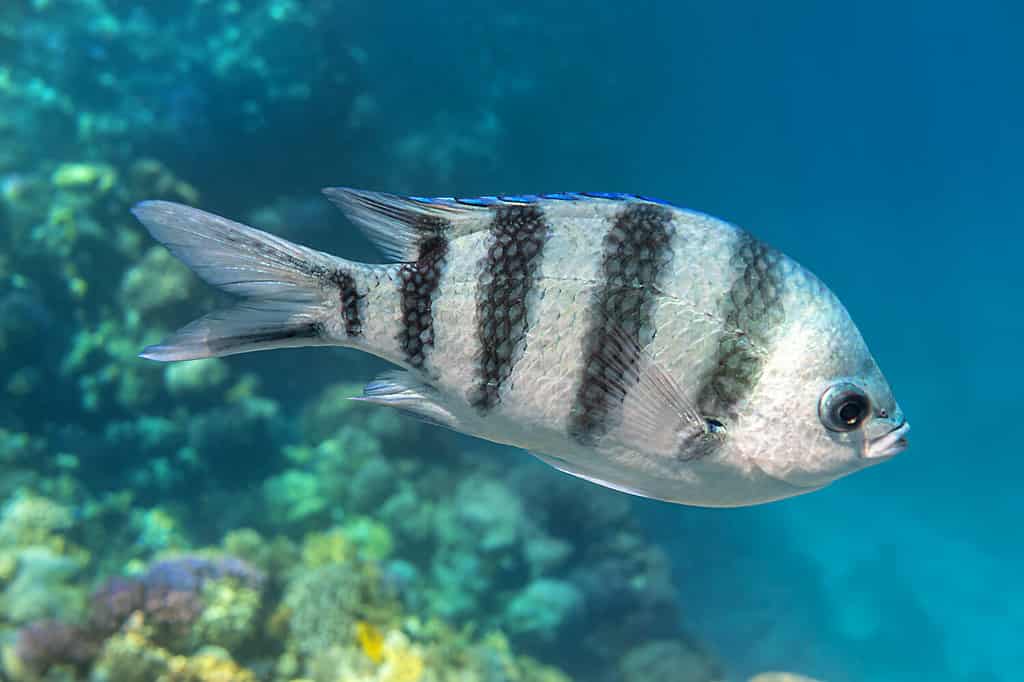
Sergeant major fish live all around the
Montana’sshipwreck.
©maya_parf/Shutterstock.com
The Montana is actually located close enough to the Constellation that many people often confuse one for the other! Built in 1918 and originally named the Sally Persis Noyes, the Constellation was completely refurbished and renamed in 1932. In July 1943, the Constellation headed to Venezuela with a cargo of phonograph records, salad dressings, antique furniture, cosmetics, medical supplies, cement bags, and several hundred cases of Johnny Walker whiskey. Unfortunately, the ship’s captain was unfamiliar with the treacherous waters of Bermuda and hit a reef (or according to some accounts, wreckage from the Montana). Fortunately, the crew and captain survived, and some of the ship’s cargo was retrieved.
Visiting the Constellation: The 40-foot remnants of the Constellation’s colossal masts stand out of the water just before Belmont ferry dock on the rocks below Harbour Road. Conspicuous remnants of her cargo can also be spotted underwater, including metal drums, glass sheets, snooker table slates, and glass bottles. When the Constellation sank, it was carrying thousands of cement bags, which are now petrified across the ocean floor. These provide an ideal habitat for flourishing algae, parrotfish, trumpetfish, groupers, Bermuda chubs, and sergeant major fish who lay their eggs among the cement bags.
7. The Iristo (Aristo) (1937)

The wreck of the
Iristois one of the best in Bermuda due to incredible variety of marine life living there.
©Shane Gross/Shutterstock.com
The Iristo (locally known as the Aristo due to a misspelling in the New York Times) was a Norwegian freighter measuring 200 feet by 250 feet. The unfortunate ship met its watery fate in 1937 when it encountered another shipwreck in Bermuda’s waters. Unfamiliar with the treacherous reefs, the ship’s captain was shocked by the sight of the wrecked Cristóbal Colón, which had gone down the year before. In an attempt to evade danger, he altered his course. Tragically, this maneuver actually led to a collision with a submerged reef.
Visiting the Iristo: Today, the Iristo rests just over a mile from the Cristóbal Colón. The bow of the ship reaches toward the ocean’s surface, rising just 18 feet above. The rest of the ship, however, sits around 50 to 55 feet below the surface. You can still see much of the Iristo today, including the intact bow and stern, as well as the propeller shaft, engine, boilers, and anchors. The Iristo is a popular diving site with lots of colorful sea life, including Bermuda chub.
8. The Rita Zovetta (1924)
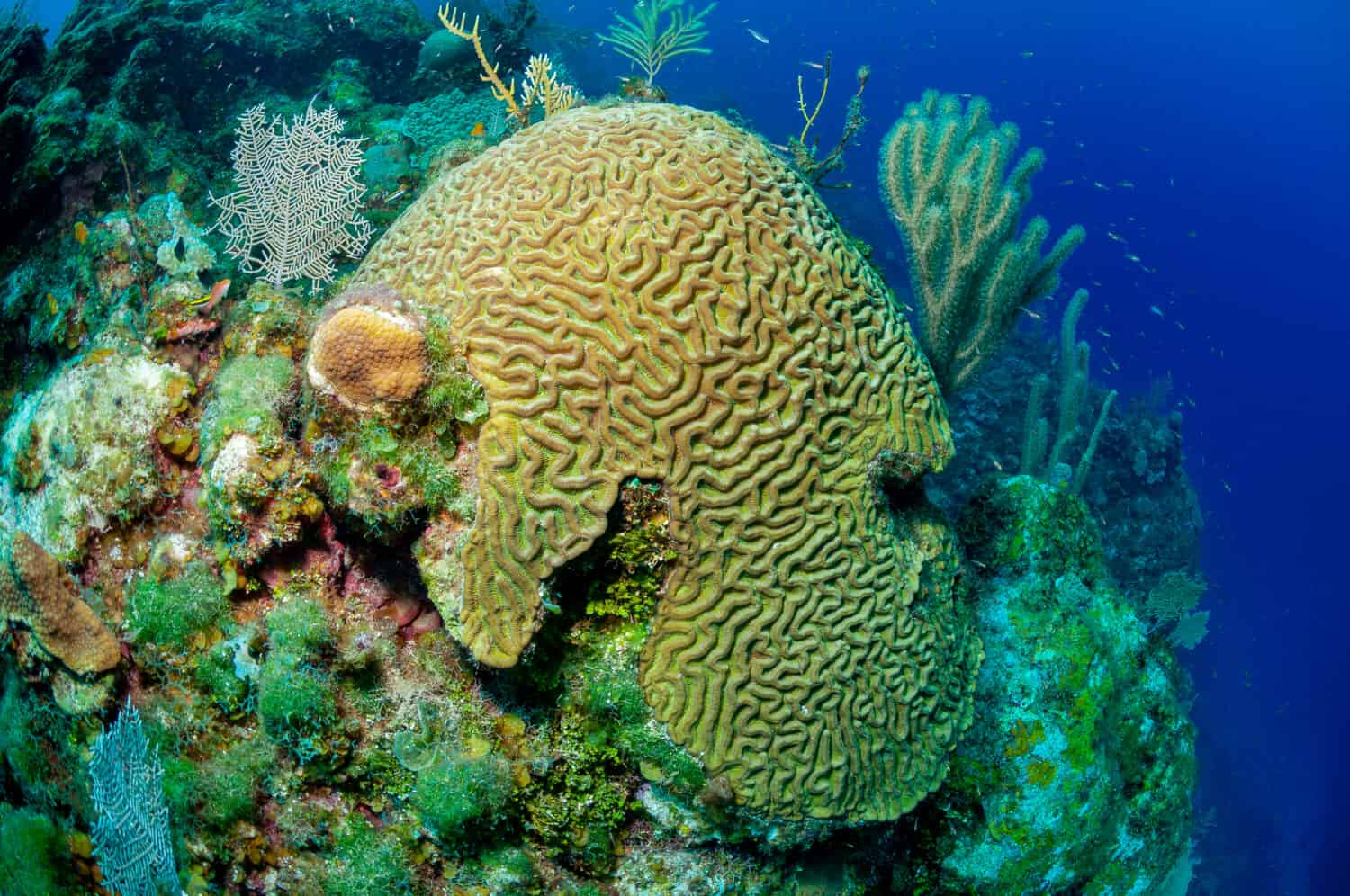
Many parts of the
Rita Zovettaare now covered in enormous brain corals.
©Jesus Cobaleda/Shutterstock.com
Originally constructed in Glasgow, Scotland in 1919, the Rita Zovetta embarked on a momentous voyage across the Black Sea in 1924. Traveling from Europe to Maryland, the ship encountered treacherous heavy seas near St. David’s Lighthouse, nestled at the northeastern tip of Bermuda. Despite this harrowing encounter, all souls on board were spared, and a substantial portion of the precious manganese cargo was successfully unloaded.
Visiting the Rita Zovetta: Lying beneath 20 to 70 feet of ocean water, the remnants of the Rita Zovetta sit in the crystal-clear waters just off St. David’s Head, close to the shipwrecked Pelinaion. The ship’s stern section is remarkably intact, and despite being firmly wedged into the reef, the propeller continues to stand defiantly as a testament to the ship’s former power. Perched on the seaward side of the reef, this shipwreck offers a beautifully picturesque backdrop for underwater photography enthusiasts. During the spring and fall, the wreckage of the Rita Zovetta teems with a colorful array of fish, providing an unforgettable diving experience.
9. The Pelinaion (1940)
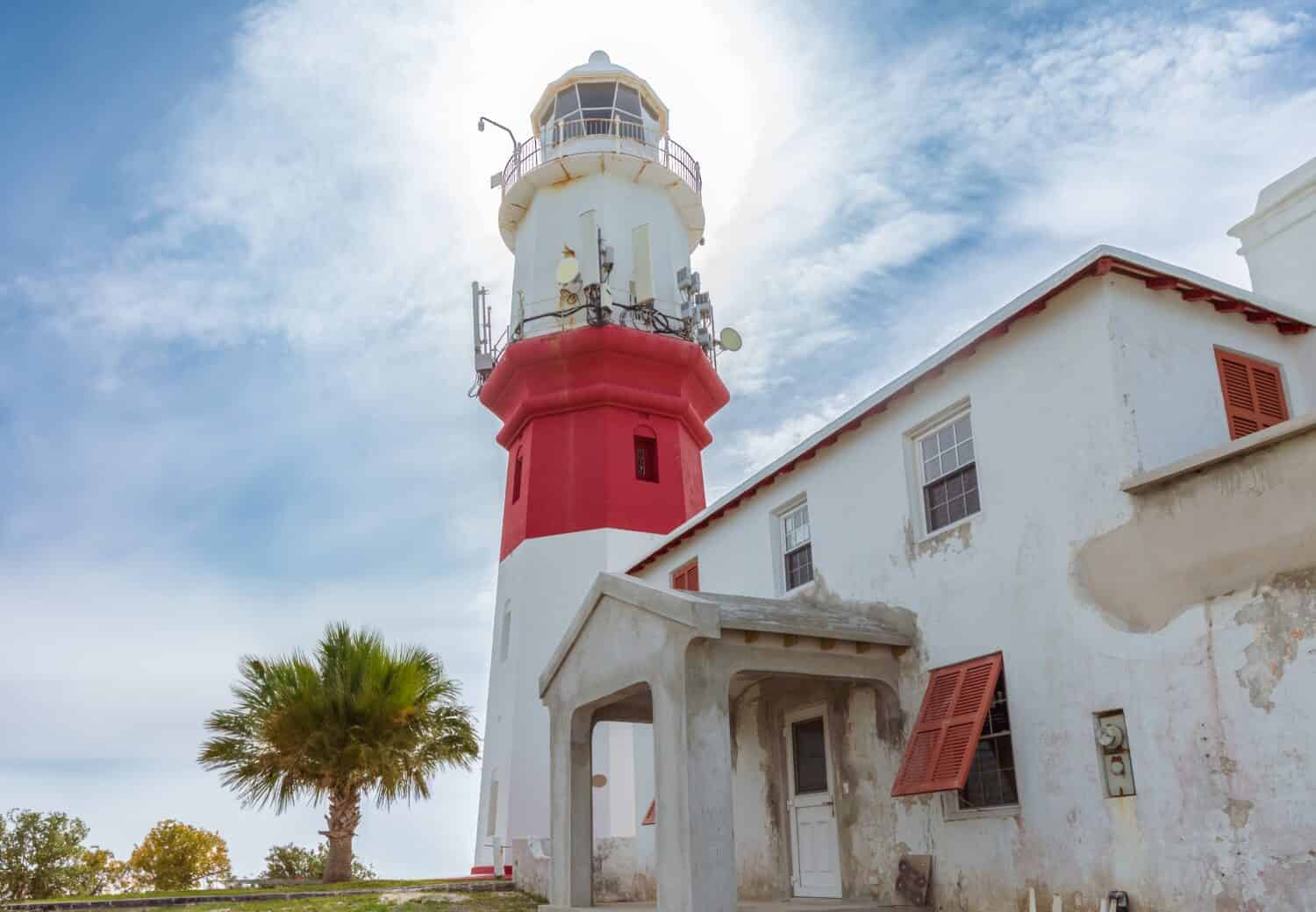
The
Pelinaionmet an untimely demise because St. David’s Lighthouse was out of commission.
©Colin N. Perkel/Shutterstock.com
Although it was never intended to make a stop in Bermuda at all, a cruel twist of fate led the Pelinaion to a watery grave in the island’s tropical waters. In 1940, the ship was on a return voyage from West Africa to Baltimore when Captain Valikos made the decision to divert for fuel. However, the captain had no idea that St. David’s lighthouse, a guiding beacon for sailors, was shrouded in darkness to prevent potential German espionage during the war. Lost in the vast expanse of the ocean without the lighthouse to guide him, Captain Valikos was disoriented and the Pelinaion ran aground off the shores of Cooper’s Island.
Visiting the Pelinaion: Today, the eerie yet majestic sight of the Pelinaion along the ocean reef is 30 to 70 feet below the surface. The 385-foot-long ship is an impressive sight, including a huge triple expansion engine, enormous steam boilers, and a spare propeller. In addition, the area has many tunnels and caves to explore. One of these allows divers to swim through to view the ship from below. The wreckage of the Pelinaion often plays host to large schools of snappers and grunts, as well as blue angel fish and barracuda.
10. The Virginia Merchant (1661)
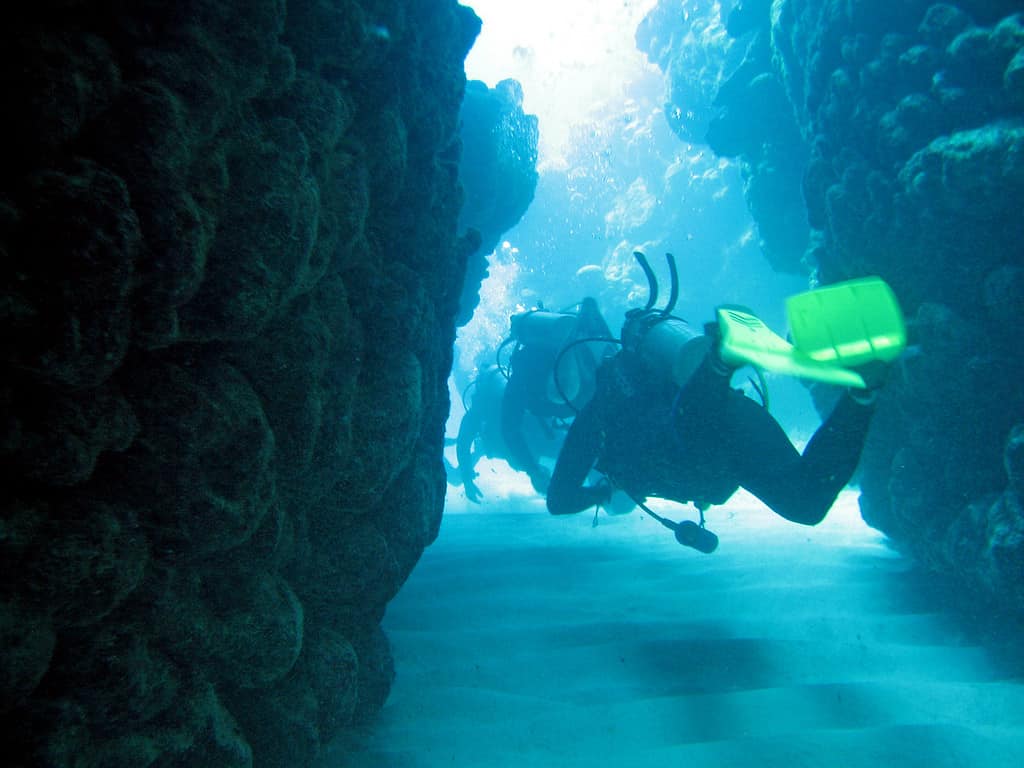
©Curtis & Renee / Flickr – License
One of the oldest shipwrecks you can still see in Bermuda is the Virginia Merchant, which sank back in 1661. An English wooden sailing ship owned by the Virginia Company, the Virginia Merchant was traveling from England to Jamestown, Virginia. Unfortunately, it hit a submerged reef off the south shore of Sonesta Beach. Tragically, few of the passengers knew how to swim, and only 10 of 179 survived.
Visiting the Virginia Merchant: After being submerged underwater for over 300 years, there is not as much of the Virginia Merchant left. A small part of the ship is still visible to divers today with some wood debris, a large metal hook that may have been her anchor, and a pile of granite ballast stones. At the nearby Sonesta Beach Hotel, you can also see one of the ship’s cannons on the beach.
The site of the Virginia Merchant wreckage is an extraordinary dive with plenty to explore. Massive reefs and holes, tunnels, archways, and caverns make the dive an adventure just 12 to 45 feet below the surface. In addition, grouper and horse-eye jacks are common here, and many divers enjoy hunting for shells in the sand.
11. The King (1984)

The
Kingshipwreck is less than a mile from Bermuda’s South Shore Island.
©Yingna Cai/Shutterstock.com
A 65-foot-long Navy tugboat from South Carolina, the King eventually became a treasure salvage vessel in Bermuda. However, in 1984 the ship’s owner, Gary Lamb, donated it to the Bermuda Dive Association and it was intentionally sunk and transformed into an artificial reef. Located 65 feet below the surface, just about a half mile from South Shore Island, the King is a very popular dive site today.
Visiting the King: The King remains well intact, with the front of the ship nestled along the sand and the back situated on a coral-stream seabed. You can even swim inside the vessel and explore the pilot house, engine room, and gallery. In addition, there are many holes surrounding the ship filled with colorful fish and shells.
12. The Caraquet (1923)
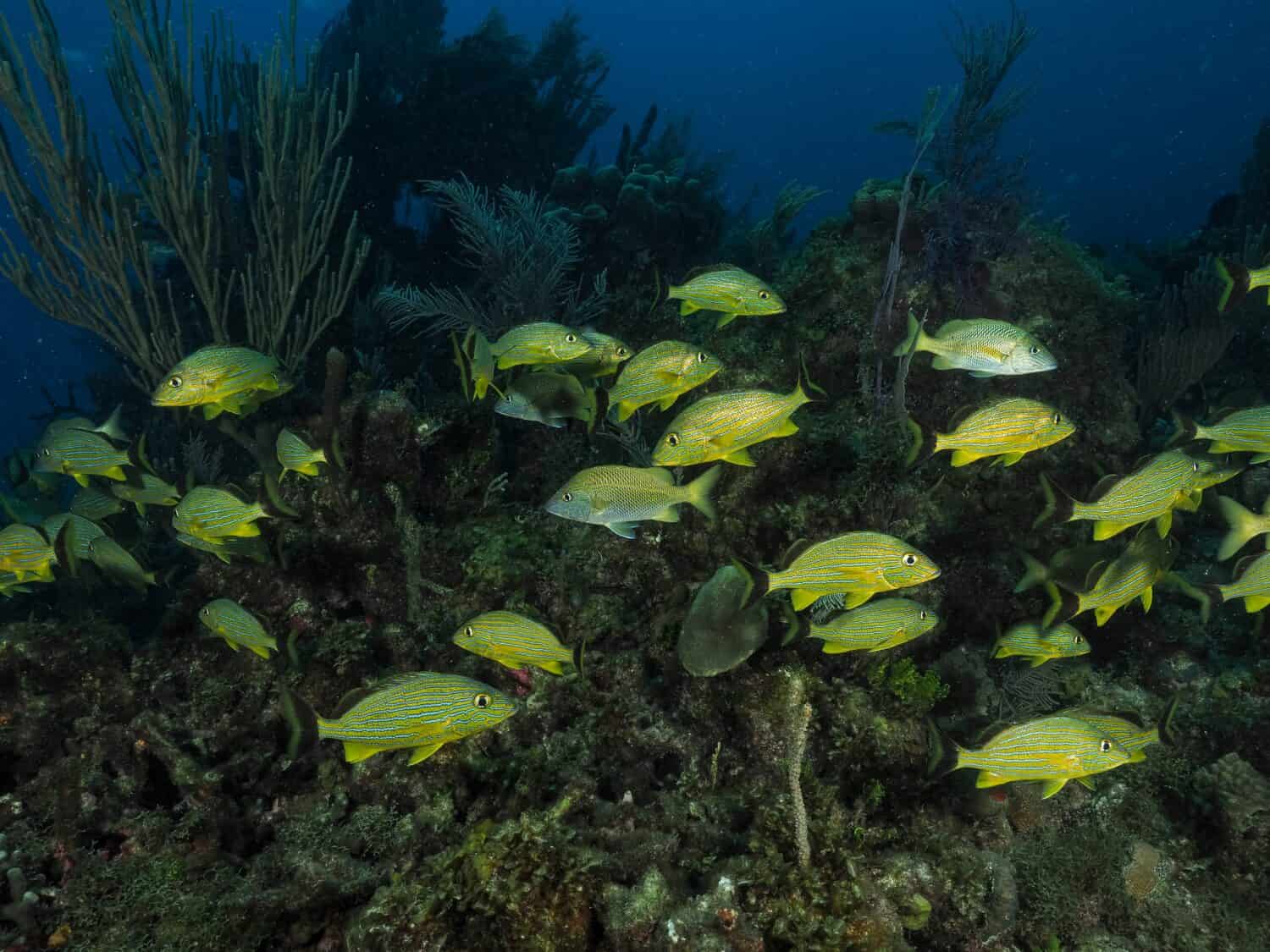
Bluestriped grunt often swim around the wreckage of the
Caraquet.©Jesus Cobaleda/Shutterstock.com
Built in 1984, the Caraquet proudly set sail. However, in June 1923 the 350-foot-long mail packet and passenger steamer was traveling from the British Virgin Islands. On its way to Halifax, it sank beneath the rough waves surrounding Bermuda’s Northern Barrier Reef. Miraculously, everyone on board, including the ship’s cargo of mail, was safely rescued.
Visiting the Caraquet: Today the Caraquet sits 30 to 45 feet below the surface across nearly two acres of the ocean floor. Visitors love the site due to its shallow and clear water, allowing easy access and visibility. However, during the winter it is very stormy in the area. Divers can see the four large boilers, engine, anchor, and large deck winches of the Caraquet amid the wreckage. In addition, brightly colored grunts often can be spotted around the site, transitioning from bright yellow to blue when they spawn.
13. HMS Vixen (1896)
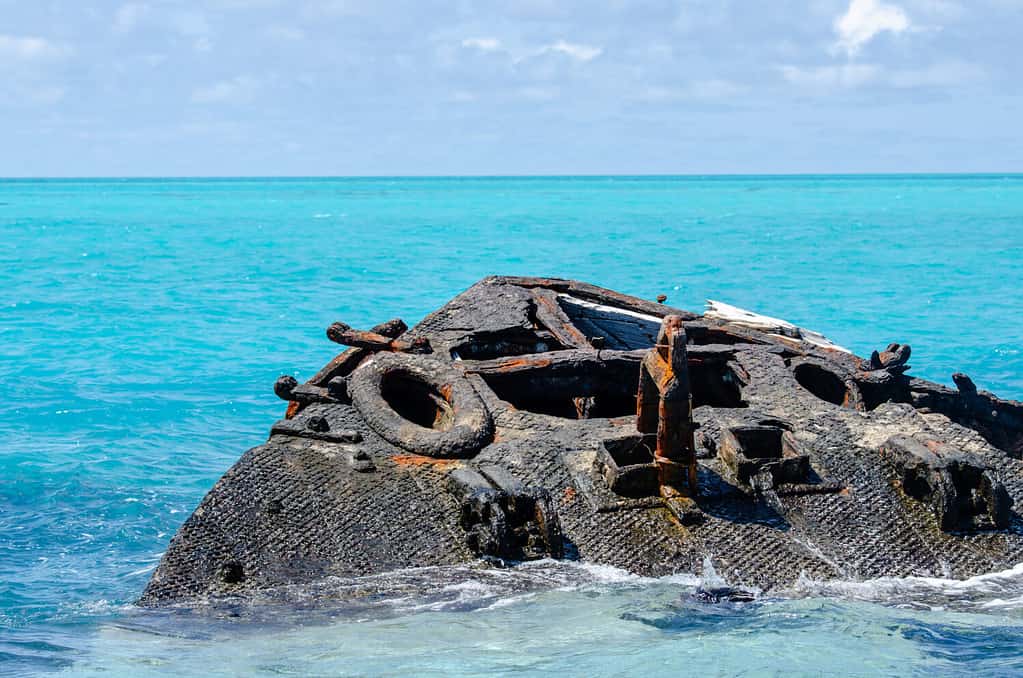
The HMS
Vixenwas the first in the Royal Navy to have twin propellers.
©Trudie Ottolini/Shutterstock.com
Set apart by its experimental design, the HMS Vixen was a truly unique armored composite gunboat of the Royal Navy with twin propellers. Alongside her sister ship Viper, Vixen arrived in Bermuda in 1868, and the two served as floating defensive batteries. Later in 1896, Vice-Admiral James Erskine suggested using the Vixen to help defend against torpedo boat attacks along the Daniel’s Head Channel. The Vixen was sunk in the channel and served as a strategic blockship to protect the area.
Visiting the Vixen: Today, the Vixen is one of the most popular and iconic shipwrecks in Bermuda, and not just for divers. Clear-bottom boats and jet ski tours also offer excellent views of this historic ship. With its bow poking out just above the water’s surface, you can easily find the Vixen on the west end of Bermuda. Divers and snorkelers can also enjoy exploring the well-preserved wreck and the wide variety of sea life swimming around it.
14. The Darlington (1886)

Bright red fire coral covers the rudder and propeller of the
Darlingtonshipwreck.
©Johan Holmdahl/Shutterstock.com
A robust steamship constructed in England back in 1881, the Darlington had an iron-hull design. It was equipped with a powerful 250-horsepower compound inverted engine to ensure smooth and efficient propulsion. In 1886, the ship embarked on a voyage from New Orleans, bound for Germany. Unfortunately, the captain made a critical oversight. Despite venturing into uncharted territory, he failed to assign a lookout to survey the surroundings. Disaster struck and the Darlington collided with Bermuda’s treacherous western reef.
Visiting the Darlington: Much of the Darlington today remains relatively intact, with just a few collapsed areas. The ship sits in shallow waters, making it a favorite among divers in Bermuda. Lying just 16 to 30 feet below the surface, you can still see the propeller shaft, boilers, and deck winches. One of the ship’s most stunning features is the stunning bright red fire coral that covers its rudder and propeller. In addition, there is also an unidentified Spanish galleon shipwreck not too far from the Darlington that you can also visit.
15. The Lartington (1879)

The site of the
Lartingtonis well-known for its colorful sea life, including elegant eagle rays.
©iStock.com/eaglerayjoel
Built in England in 1875, the Lartington was built to use both steam and sails, so it could travel with or without wind. On a trip to Russia in 1879, the ship was hit by an enormous wave, cracking the ship’s hole. The water pumps of the ship couldn’t keep pace with the enormous leak. So, Captain George Dixon changed course and sailed for Bermuda. The Lartington almost made it to the island, but just five miles from the Royal Naval dockyard it hit a series of blind breakers and ran aground.
Visiting the Lartington: The wreckage of the Lartington is surprisingly preserved considering how long it has been underwater. Divers can swim into the bow where there is an air pocket that has been trapped there for over 130 years! Surprisingly enough, this peculiar spot has witnessed a few underwater marriage proposals. In addition, you can spot blackfin groupers, large margates, purple heart sea urchins, eagle rays, and schools of French grunts. Just south of the ship, there is also a small cave that often hosts spiny lobsters.
16. L’Herminie (1837)

Fortunately, a group of local boats rescued the crew of
L’Herminieafter the ship crashed.
©Musée des Beaux-Arts de Brest / Public Domain – License
Carrying 60 cannons and measuring 300 feet long, L’Herminie is the most impressive warship wrecked in Bermuda’s waters. In 1837, this massive Naval warship was sent to Mexican waters during the Mexican Revolution. However, over 130 members of the crew got yellow fever. The ship changed course to return to France but diverted to Bermuda due to bad weather. However, the ship struck against Bermuda’s northwestern-facing barrier reef and broke apart.
Visiting L’Herminie: Lying 30 to 35 feet below the surface, L’Herminie rests on a bed of coral and sand about 4 miles west of Ireland Island. Today you can still see 20 to 40 of her original 60 cannons and the ship’s two enormous anchors. Other pieces of wreckage are scattered and buried in the sand, including pottery, bottles, broken glass, cannonballs, and some of the ship’s timbers.
17. The Minnie Breslauer (1873)

The
Minnie Breslaueris now home to several coral species, including gorgonian coral.
©LUNAMARINA/iStock via Getty Images
One of the unluckiest ships in Bermuda was the Minnie Breslauer — it only sailed on one single voyage! Built in Portugal in 1872, the 300-foot-long ship tragically crashed during her maiden voyage to New York in 1873. Captain Peter Corbet was not familiar with the reefs in Bermuda. Unfortunately, he could not prevent the ship from colliding with the South West Breaker Reef.
Visiting the Minnie Breslauer: The wreck of the Minnie Breslauer is a very popular dive site, about 1 mile off Horseshoe Bay. The shipwreck rests on the edge of the reef, with the bow or front of the ship in about 45 feet of water. Much of the ship has been taken over by dome coral, gorgonian coral, sponges, and sea whips, giving it a unique appearance. Part of the ship is semi-intact in about 70 feet of water. Even the rudder quadrant, rudder blade, and propeller are all still attached.
18. The Pollockshields (1915)
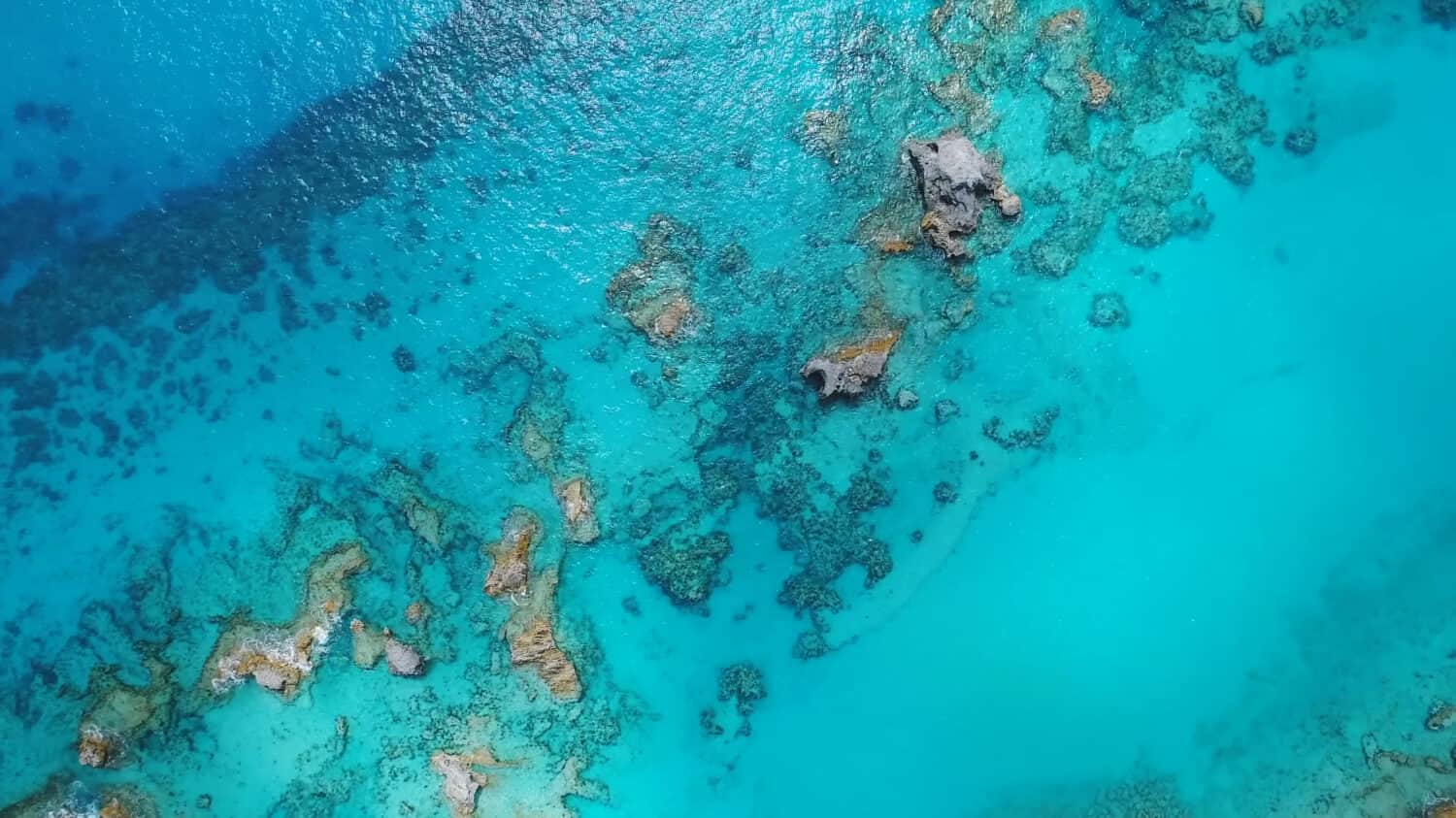
Bermuda’s reefs stretch across a vast expanse of 200 square miles and have claimed hundreds of ships.
©Ihor Kazantsev/Shutterstock.com
The Pollockshields was a German cargo steamer built in 1890. During World War I it carried ammunition and cargo. However, in 1915 while sailing from Wales, a ferocious storm unleashed its wrath upon the ship. Although the ship and its crew survived, it blew them off course to Bermuda. Here, the Pollockshields collided with the coral reefs near Elbow Beach.
Visiting the Pollockshields: Today, the remnants of the mighty Pollockshields now lie along the coral, submerged in up to 40 feet of water. It is a popular diving site, and divers can swim through the two massive boilers and the ship’s rusted propeller. On occasion, live ammunition and shell casings are found among the wreckage. However, this is less common today. The Bermuda Marine Police and the British military have been working together for over 20 years to clear the site of any dangerous artifacts.
19. The Caesar (1818)

The
Caeserwas carrying a large number of massive grindstones when it sank.
©Pixel62/Shutterstock.com
An English brigantine built in 1814, the Caesar was on its way from England to Baltimore when it hit a reef in Bermuda and sank. Much of the ship’s cargo was salvaged over the years, including many distinctive Masonic flasks. In fact, some of the buildings and pathways in Bermuda used many of the ship’s grindstones and bricks.
Visiting the Caesar: Located 25 to 35 feet below the ocean’s surface off the west end of Bermuda, the wreckage from the Caesar is quite unique. Sometimes the wreckage is exposed, but other times it is covered depending on the season. The most fascinating thing to see from the Caesar, however, is the enormous grindstones that the ship was carrying in its cargo. Some of the largest grind stones weigh over a ton, stacked on top of wooden remains of the ship’s hull.
20. The Manilla (1753)
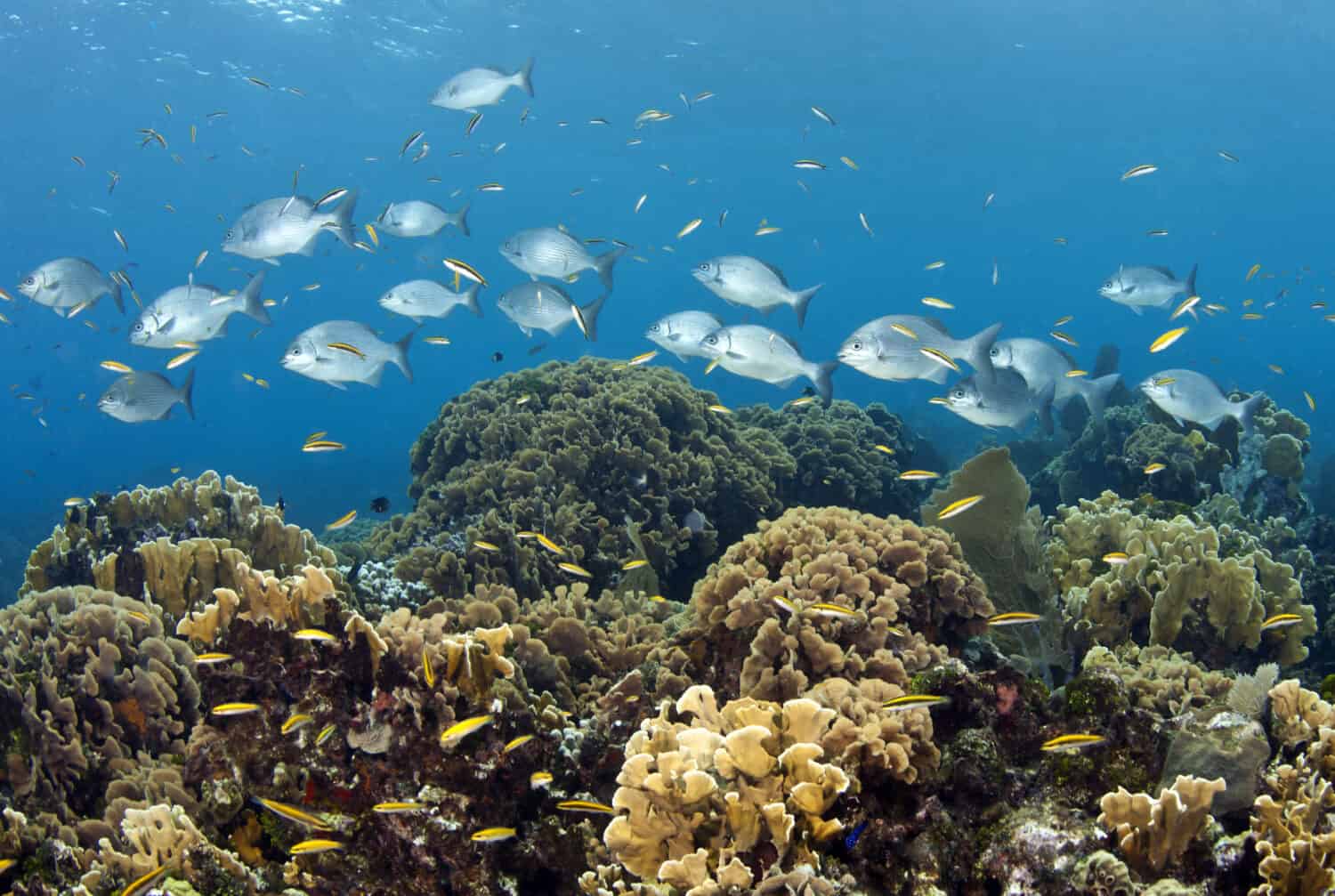
When the
Manillawas first discovered, much of it was overgrown with coral.
©John A. Anderson/Shutterstock.com
The Manila is an intriguing shipwreck, as researchers still don’t know its original name. It is a Dutchman-class ship that sank in 1753, not far from the Eagle (1659) and the Prince David (1932). Although we don’t know much about its origin or purpose, researchers believe that the ship’s passengers were having a party, as evidenced by the bottles, plates, and other objects scattered throughout the reef.
Visiting the Manilla: The remains of the Manilla appear to be lying upside down in 15 feet of water, along with stacks of cannons. Not too far from the wreck, you can also see the enormous anchor of the Prince David with its chain suspended about 10 feet above the sand.
21. The Stonewall (1600s)
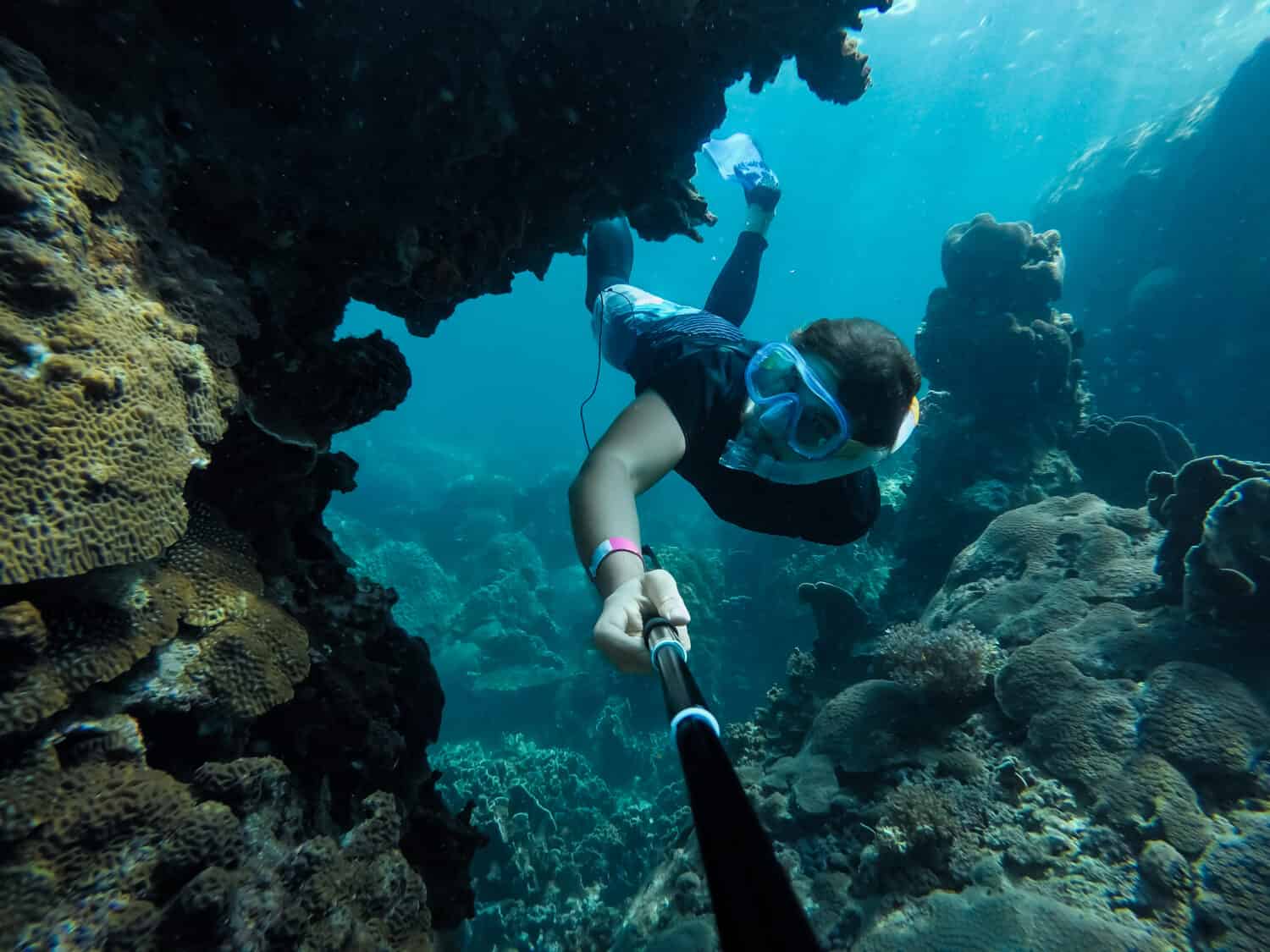
The
Stonewallis a great place for both beginner divers and snorkelers.
©Aleksei Kornev/Shutterstock.com
Another shipwreck with unknown origins you can still see in Bermuda is the Stonewall, a wooden barque from the 1600s. Some researchers speculate that it might possibly be the remains of a Spanish vessel lost in 1648. However, despite multiple examinations by researchers, the ship continues to hide its true identity.
Visiting the Stonewall: The ballast stones and lower wooden timbers of the Stonewall lie to the west of Bermuda, resting in a sandy hole surrounded by two large reefs. As an open site, it is an excellent place for snorkelers and beginning divers. It has exceptional visibility, often reaching more than 100 feet. In addition, the Stonewall wreck attracts enchanting troops of colorful parrot fish.
22. Hayes KB-501 Airplane (1963)
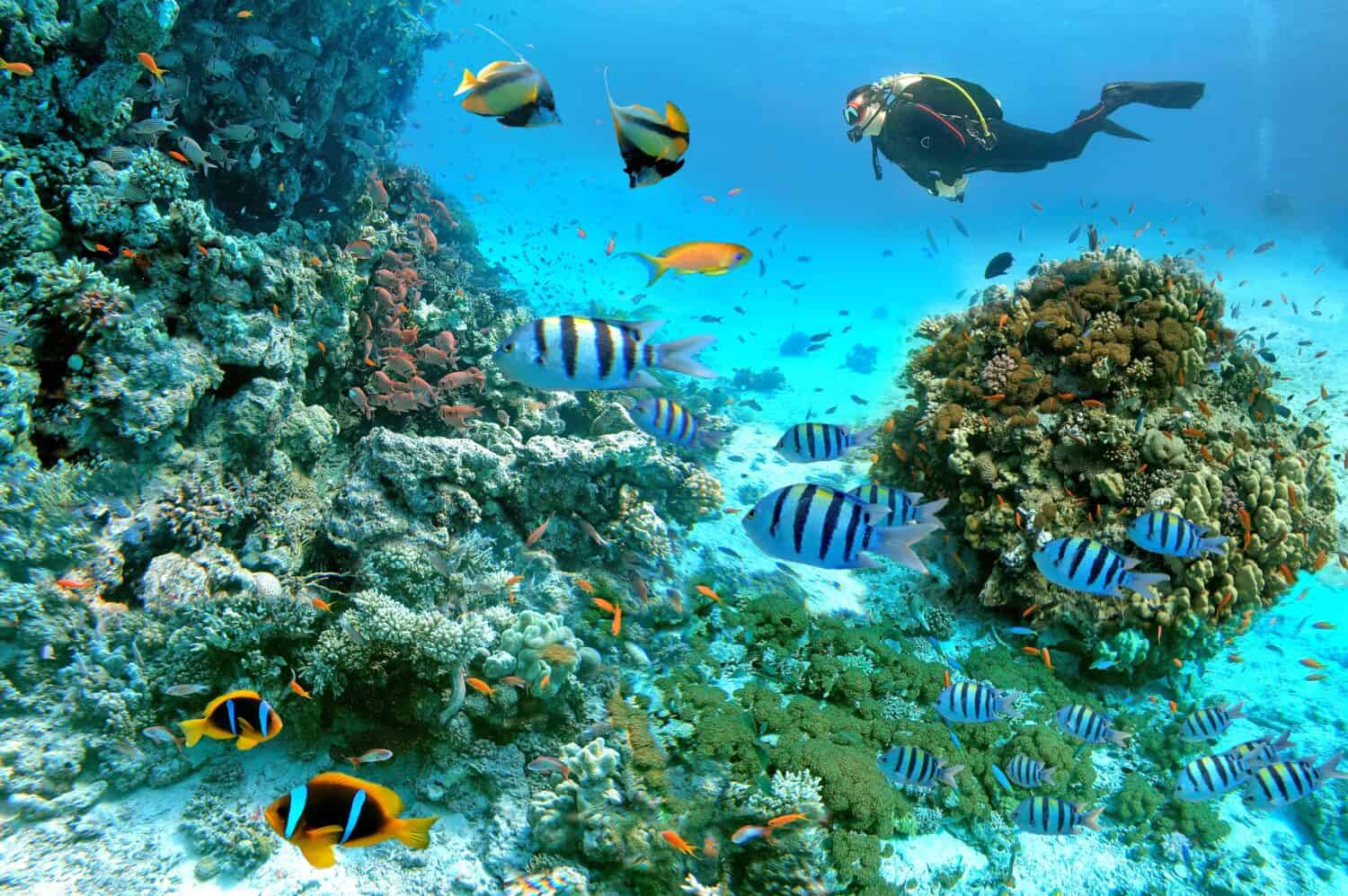
Sergeant major fish are sometimes called “farmer fish” because they create small patches of algae.
©branislavpudar/Shutterstock.com
Technically, this wreck isn’t actually a shipwreck at all — it’s an airplane wreck! A Hayes KB-501 aerial tanker from 1963, the plane was a heavily modified Boeing B-50 bomber on its way from the Azores to Louisiana. Tragically, however, just after take-off, the engine exploded and set its left wing on fire. Six of the seven crew members escaped. Tragically, their commander, John Moore, perished when the plane crashed into the Atlantic Ocean near Bermuda.
Visiting the Hayes KB-501 Airplane: Located 25 feet below the surface near the Caesar and the North Carolina, the Hayes KB-501 bomber now rests amidst a thriving coral reef. In both summer and winter, the visibility is good here. Divers can see hundreds of square feet of the plane’s aluminum panels scattered across a rather wide area, along with four engines still attached. The peculiar plane wreck is a magnet for sea life. It draws in multitudes of fish, including sergeant majors that busily tend their algae farms. The fish are attracted to the wreck because of the aluminum and nutrient-rich waters that surround it.
Summary of 22 Amazing Shipwrecks You Can Still See in Bermuda
| Ship’s Name | Year the Ship Sank |
|---|---|
| The Cristóbal Colón | 1936 |
| The Hermes | 1984 |
| The Mary Celestia | 1864 |
| The North Carolina | 1880 |
| The Montana | 1863 |
| The Constellation | 1943 |
| The Iristo (Aristo) | 1937 |
| The Rita Zovetta | 1924 |
| The Pelinaion | 1940 |
| The Virginia Merchant | 1661 |
| The King | 1984 |
| The Caraquet | 1923 |
| HMS Vixen | 1896 |
| The Darlington | 1886 |
| The Lartington | 1879 |
| L’Herminie | 1837 |
| The Minnie Breslauer | 1873 |
| The Pollockshields | 1915 |
| The Caesar | 1818 |
| The Manilla | 1753 |
| The Stonewall | 1600s |
| Hayes KB-501 Airplane | 1963 |
The photo featured at the top of this post is © Trudie Ottolini/Shutterstock.com
Thank you for reading! Have some feedback for us? Contact the AZ Animals editorial team.







